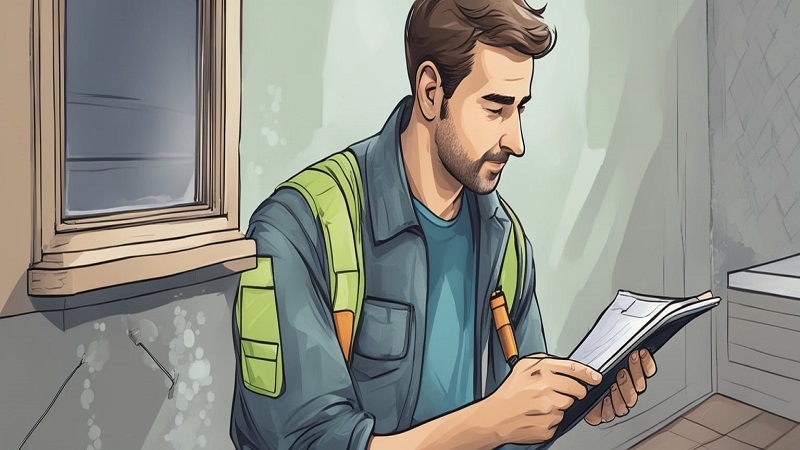Dealing with damp issues in your home can be a frustrating experience that often requires professional intervention. Recognizing when to hire a damp specialist and understanding what their services entail can save homeowners significant time, money, and stress in the long run. A qualified damp specialist can accurately identify the type and source of moisture problems, recommend appropriate treatments, and implement effective solutions that address the root cause rather than just masking symptoms.
Damp problems come in various forms, including rising damp, penetrating damp, and condensation. Each requires different approaches and expertise to resolve properly. Without professional assessment, homeowners risk implementing ineffective remedies or overlooking serious structural issues that could worsen over time.
This guide examines the qualifications to look for in a reputable damp specialist, typical costs involved, and the diagnostic process you can expect during an assessment. Understanding these elements helps ensure you make informed decisions when tackling moisture problems in your property.
Understanding Damp Problems and Their Impact
Damp problems can significantly affect both property integrity and occupant health. Identifying the type of dampness is crucial for implementing effective solutions and preventing long-term structural damage.
Types of Damp Issues
Rising damp occurs when moisture from the ground moves upward through walls and floors by capillary action. It typically affects ground floor walls and creates a visible tide mark up to 1 meter high.
Penetrating damp happens when water enters buildings horizontally through external walls, often due to structural issues. It commonly appears as damp patches that worsen during rainy weather and can penetrate deep into the property.
Condensation forms when warm, moisture-laden air contacts cold surfaces. This is the most common type of dampness in UK homes, particularly during winter months. It frequently appears on windows, cold walls, and in poorly ventilated areas like bathrooms and kitchens.
Lateral damp primarily affects basements and below-ground structures where groundwater pressure forces moisture through walls and floors.
Common Causes of Damp
Building defects are primary contributors to dampness, including damaged roof tiles, blocked gutters, and cracked masonry. These issues allow water to penetrate the building envelope.
Poor ventilation prevents moisture from escaping, particularly in high-humidity areas like kitchens and bathrooms. Modern energy-efficient buildings sometimes exacerbate this problem by limiting air exchange.
Failed or missing damp-proof courses (DPCs) can lead to rising damp issues, especially in older properties. A damaged DPC allows ground moisture to move upward into walls.
Plumbing leaks, even minor ones, create persistent dampness that can go unnoticed for months. Burst pipes or faulty appliances can rapidly introduce significant moisture into the property.
Lifestyle factors also contribute significantly:
- Drying clothes indoors
- Excessive showering without ventilation
- Cooking without extraction
- Keeping the property insufficiently heated
Health Risks Associated With Damp and Mould
Damp environments promote mould growth, which releases spores that can trigger allergic reactions and respiratory problems. Black mould (Stachybotrys chartarum) is particularly concerning due to its potential toxicity.
Respiratory conditions like asthma can be exacerbated by damp environments. Studies show that people living in damp homes have a 40% higher risk of developing asthma.
Allergen proliferation increases in damp conditions. Dust mites thrive in environments with over 65% humidity, and their waste products are powerful allergens linked to eczema and rhinitis.
Vulnerable groups face heightened risks, including:
- Children under 14
- Elderly individuals
- Those with compromised immune systems
- People with existing respiratory conditions
Long-term exposure to dampness and mould has been linked to chronic sinusitis, bronchitis, and even cognitive impairment in some studies.
Signs and Symptoms of Damp in Properties
Visual indicators provide the most obvious evidence of dampness. Look for water stains, peeling wallpaper, blistering paint, and visible mould growth, particularly in corners and behind furniture.
A musty smell is often the first indication of hidden damp issues. This distinctive odor results from microbial volatile organic compounds released by mould and mildew.
Physical changes to the property include:
- Crumbling plaster or mortar
- Salt deposits (efflorescence) on walls
- Warped timber or floorboards
- Condensation on windows
Material deterioration accelerates in damp conditions. Wood rots, metal corrodes, and building materials lose structural integrity. Even modern materials can degrade when consistently exposed to moisture.
Cold spots on walls may indicate dampness that’s reducing thermal efficiency. These areas feel noticeably cooler than surrounding surfaces and often develop condensation problems during temperature fluctuations.
How to Hire the Right Damp Specialist
Finding a qualified damp specialist requires careful consideration of their credentials, survey methods, and proposed solutions. The right professional can accurately diagnose moisture issues and provide effective, long-term remedies to protect your property.
Verifying Qualifications and Certifications
When selecting a damp specialist, qualifications should be a top priority. Look for professionals with recognized certifications such as CSRT (Certificated Surveyor in Remedial Treatment) or CSSW (Certificated Surveyor in Structural Waterproofing). These credentials indicate specialized training in damp diagnosis and treatment.
Membership in the Property Care Association (PCA) is another strong indicator of reliability. PCA members must adhere to strict codes of practice and undergo regular assessments to maintain their membership.
Always ask for evidence of insurance, including professional indemnity and public liability coverage. This protects you if anything goes wrong during the damp treatment process.
Request references from previous clients and, if possible, view examples of completed projects. Experienced specialists should be willing to provide case studies demonstrating successful damp-proofing solutions.
What to Expect From a Damp Survey
A professional damp survey should be thorough and methodical. The specialist will inspect both interior and exterior areas of your property, identifying potential sources of moisture.
During the inspection, they should use moisture meters to measure dampness levels in walls, floors, and timber. More advanced specialists might employ thermal imaging cameras to detect hidden damp patches behind surfaces.
The survey should identify the type of damp problem—rising damp, penetrating damp, condensation, or water leaks. Misdiagnosis is common, so be wary of specialists who immediately suggest expensive damp-proofing solutions without proper investigation.
A comprehensive report should follow the survey, detailing:
- Type and extent of damp problems
- Root causes identified
- Evidence (photographs, moisture readings)
- Recommended treatment options
- Detailed cost breakdown
Recommended Damp Treatments and Solutions
Effective damp specialists provide tailored solutions rather than one-size-fits-all approaches. The recommendations should address the specific type of moisture problem affecting your property.
For rising damp, proper treatments may include a new damp-proof course (DPC) installation or chemical injection. Penetrating damp often requires external waterproofing, gutter repairs, or pointing work on masonry.
Condensation issues typically need improved ventilation solutions, such as installing extractor fans or providing advice on reducing moisture generation. Addressing cold surfaces through insulation may also be recommended.
Timber treatment might be necessary if moisture has caused wood rot. The specialist should identify affected areas and propose targeted remedies rather than wholesale replacement.
Be suspicious of companies pushing unnecessary chemical treatments. Good specialists often suggest simple, cost-effective solutions like improved ventilation before expensive interventions.
Ongoing Prevention and Maintenance Strategies
A reputable damp specialist will provide advice on preventing future moisture problems. This might include maintenance schedules for guttering, ventilation systems, and external drainage.
They should explain how to reduce everyday moisture production through proper ventilation when cooking, bathing, or drying laundry. Simple behavioral changes can significantly impact condensation levels.
Recommendations might include using dehumidifiers in problem areas or installing additional ventilation. The specialist should also advise on maintaining optimal heating levels to prevent cold surfaces that attract condensation.
For properties with ongoing moisture sensitivity, the specialist might suggest regular monitoring using simple humidity meters. They should also provide clear guidance on early warning signs of returning damp issues.
Many reputable companies offer maintenance packages or follow-up inspections to ensure long-term protection from damp and mold remediation if needed.
Dorset Damp Proofing
Phone: 01202 985156
Url: https://dampproofingdorset.co.uk/
Unit 49, Churchill Business Park, Provence Dr
Bournemouth, DorsetBH11 9TH
United Kingdom



